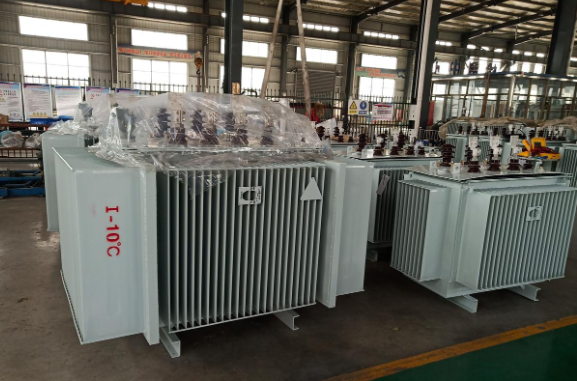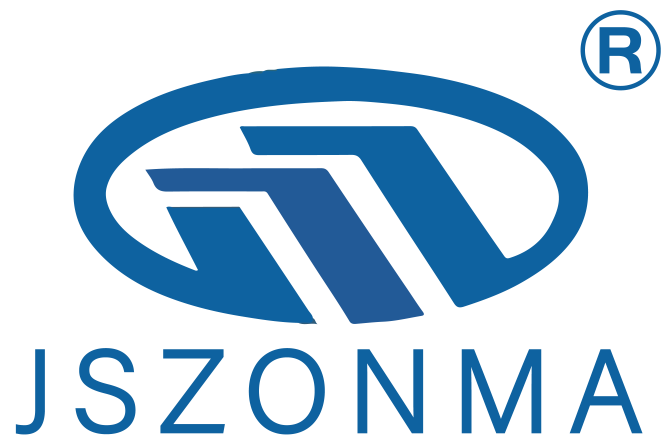Voltage Regulation for Efficient Energy Transmission
Substation transformers are essential for power distribution because they keep voltage levels within acceptable ranges. Without proper regulation, problems like voltage drops, overloaded circuits, and damaged equipment become real concerns that interrupt service and rack up repair costs. Transformers adjust voltage during transmission to reduce wasted energy. Research indicates that keeping voltages at their best level can slash energy waste by around 10%. A crucial part of this system is what's called a tap changer on the transformer itself. These devices let operators tweak voltage settings on the fly, creating a kind of safety net when demand fluctuates and helping maintain consistent electricity delivery across the grid.
Ensuring Grid Reliability and Stability
Substation transformers play a key role in keeping the power grid reliable, particularly when demand spikes. These devices help maintain steady power flow across the electrical network, stopping problems before they can escalate into widespread blackouts. When something goes wrong somewhere on the grid, these transformers actually create barriers between different sections so other parts keep working normally. That means smaller issues don't turn into citywide power failures. With more people using electricity than ever before and all those solar panels and wind turbines getting connected to the system, modern transformers have been built specifically to handle unpredictable voltage changes and strange electrical patterns. This kind of stability matters a lot as we move toward cleaner energy sources because unstable grids just won't work well with intermittent power generation from renewables.
Key Types of Substation Transformers
Step-Up vs. Step-Down Transformers
Transformers at substations play a big role in changing voltage levels so they fit what's needed. When we need to send power across long distances, step-up transformers boost those voltages way up. Higher voltage means electricity moves better through the grid with less waste along the way. On the flip side, when power reaches communities, step-down transformers bring down that high voltage to something safe enough for homes and businesses. Most households only need around 120 volts or so for their appliances to work properly. Getting the transformer choice right matters a lot. Electric companies look at how much power will flow through the system and how far it has to go before deciding which transformers to install. Smart choices here save money in the long run while keeping everything running smoothly.
Distribution Substation Transformers
Distribution transformers come in different forms to meet the needs of factories, businesses, and homes by stepping down electricity to usable levels. Most units sit on poles or rest on pads on the ground. This setup saves space, makes installation easier, and gives technicians better access when regular checks are needed. How efficient these transformers operate really affects what companies pay for power. Going with models that have higher efficiency ratings can cut wasted energy by around 15%, which adds up over time. That's why good transformer selection matters so much for keeping electrical service dependable without breaking the bank.
Specialized Transformers for Renewable Integration
As more renewable energy gets added to power grids around the world, certain types of transformers become absolutely essential for dealing with all that unpredictable input coming from solar panels and wind turbines. Basically, these transformers need to cope with constantly changing electricity demands while keeping everything running smoothly on the grid, even when weather conditions throw curveballs at renewable energy production. We've seen some pretty cool improvements lately too - there's now something called smart transformers that work hand in glove with grid management programs. What makes them special? They give operators much better access to live data streams, so they can actually see what's happening right now instead of guessing. This means faster responses to problems and generally better performance across the whole system when integrating renewables into existing infrastructure.
Critical Components of Substation Transformers
Core and Windings Design
How substation transformers are built around their core and windings really affects how well they work and how long they last. The core itself plays a big role in determining magnetic characteristics and overall energy efficiency. Most manufacturers go for silicon steel because it just performs better than other options available today. When it comes to windings, getting the configuration right means significantly cutting down on those pesky energy losses while still pushing out strong voltage levels. Some research shows that when engineers get creative with winding arrangements, they can push operational efficiency past 98 percent mark, something that matters a lot in facilities where every bit of power counts. We've also seen improvements in recent years regarding insulation materials used throughout these systems. Better insulation not only extends the life of equipment but also cuts down on those costly maintenance visits that nobody wants to schedule during peak operation periods.
Cooling Systems: Dry-Type vs. Oil-Immersed
Cooling systems play a vital role in keeping substation transformers running efficiently, handling heat buildup and maintaining stable operations. Dry type transformers work really well in city areas because they come with built-in safety features and pose much lower fire risks since they rely on air for cooling instead of flammable materials. Meanwhile, oil immersed transformers tend to be preferred when dealing with heavy duty applications where better heat management is needed to handle those bigger electrical loads without overheating. Choosing the right cooling method matters a lot for how long these transformers last and whether they keep performing reliably over time, which means businesses can save money in the long run while avoiding costly replacements down the road.
Protection Devices: Circuit Breakers and Arresters
Transformer protection really depends on devices like circuit breakers and lightning arresters to keep them safe from electrical problems and those sudden voltage jumps from storms. When something goes wrong, circuit breakers let transformers shut down without causing bigger issues for the whole power system. We see more extreme weather these days, so lightning arresters have become pretty important too. They stop those dangerous surges that could wreck equipment during thunderstorms or other bad weather events. Maintenance matters a lot here folks. If companies skip regular checks on these protective gear, they risk major breakdowns down the road. And trust me, fixing what gets damaged later costs way more money than just doing proper upkeep in the first place.
Substation Transformers in Voltage Conversion Processes
High-Voltage Transmission (Above 36 kV)
High voltage transformers play a vital role in our energy infrastructure, making it possible to send electricity across long distances while losing very little power along the way. Basically, they take the electricity generated at power plants and step it up to much higher voltages so it can travel through transmission lines efficiently. One particular type worth mentioning is the autotransformer, which stands out because it uses just one coil instead of separate windings for input and output. This clever design saves space and reduces material costs, which makes them quite popular in certain applications. Good insulation and solid build quality matter a lot when talking about high voltage transformers. After all, any failure in these components could lead to major problems down the line, not to mention shortened equipment lifespan. Proper construction ensures stable power delivery throughout the grid, something we all rely on every day without even thinking about it.
Medium-Voltage Distribution (1 kV-36 kV)
Medium voltage transformers form the core of most power distribution systems today. They basically take electricity from substations and deliver it to homes and businesses safely. These devices work by stepping down the high voltage from transmission lines to something usable for everyday appliances. Without them, our lights would flicker and factories would shut down regularly. Recent improvements in transformer technology have led to smaller designs that fit better in tight spaces. Manufacturers now produce models that can slide right into old installations without major rewiring. This makes upgrades easier for utility companies trying to keep up with growing demand. Cities benefit too since compact transformers blend in better with surrounding architecture rather than standing out as industrial eyesores.

Low-Voltage End-User Supply
Low voltage transformers are designed to provide just the right amount of power for homes, businesses, and factories across the board. With rising global energy needs, making these transformers work better is becoming really important. Some newer models actually hit around 99% efficiency which is pretty impressive when you think about it. That means less wasted power going through the system. These days, manufacturers are adding all sorts of handy features to their low voltage transformers too. Things like easier mounting points and clearer indicator lights make installation simpler and maintenance less of a hassle. The whole point is to keep everyone safe while making sure the transformer works well for years. Better transformers translate to fewer outages and a grid that can handle more demand without breaking down, especially as we push toward greener energy solutions.
Substation Transformers and Renewable Energy Integration
Managing Variable Solar/Wind Inputs
Transformers at substations that come with smart regulation tech play a major role in handling the ups and downs from solar panels and wind turbines. These devices can actually adapt when power output changes, which helps get renewable energy properly connected to the main grid system. Old fashioned grids just aren't built to handle how unpredictable green energy can be, so this kind of flexible transformer has become a must have for today's power networks. When systems can respond quickly to shifts in power generation levels, it keeps everything running smoothly without unexpected shutdowns or service interruptions. With renewables growing all over the place now, being able to plug these clean sources into existing infrastructure without causing problems remains absolutely key for keeping our entire electrical network stable and working efficiently long term.
Grid Modernization for Decentralized Generation
With more and more people generating their own power at home or locally, the old ways of managing electricity through substations just won't cut it anymore. Transformer technology needs to catch up fast if we want to handle all this extra energy coming from different directions. What's happening now is that companies are adding digital components to their equipment so they can watch what's going on second by second while also making sure less energy gets lost along the way. These smarter grids with upgraded transformers actually make a big difference in cutting down on wasted electricity, which means fewer outages and lower bills for everyone involved. Power companies aren't just looking at this as an option anymore they need to get these new systems in place because otherwise they'll fall behind completely. The real game changer comes from these intelligent transformers that let the whole system adapt better when solar panels go offline or wind turbines stop spinning, keeping everything running smoothly even as we bring more renewables into the mix day after day.
FAQ
What are the main types of substation transformers?
The main types include step-up transformers, step-down transformers, and distribution transformers. Each serves a distinct purpose in adjusting voltage levels for either long-distance transmission or local distribution.
How do substation transformers help in integrating renewable energy?
Specialized transformers for renewable integration manage variable inputs from solar and wind sources, ensuring these energies are effectively integrated into the grid while maintaining stability and efficiency.
What role do protection devices play in substation transformers?
Protection devices such as circuit breakers and lightning arresters safeguard transformers against electrical faults and voltage spikes, preventing potential damage and ensuring grid reliability.

